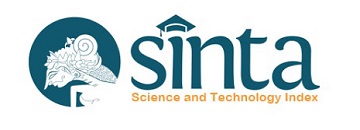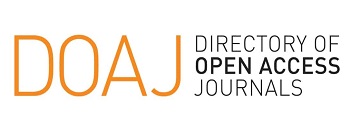Social Ecological Resilience System of Ambon Island Protected Forest, Maluku Province, Indonesia

Downloads
Downloads
Allen, C. R., Cumming, G. S., Garmestani, A. J., Taylor, P. D., & Walker, B. H. (2011). Managing for resilience. Wildl Biol 17:337–349. http://dx.doi.org/10.2981/10-084.
Amalia, R., Dharmawan, A. H., & Putri, E. I. K. (2015). Perubahan Lanskap Ekologi Dan Resiliensi Nafkah Rumahtangga Petani Di Sekitar Hutan Di Kalimantan Timur. Sodality: Jurnal Sosiologi Pedesaan, 3(3), 121–127. https://doi.org/10.22500/sodality.v3i3.10643.
Arkham, M. N., Wahyudin, Y., Kelana, P. P., Haris, R. B. K., & Sari, R. P. (2021). Studi Penilaian Resiliensi Nelayan Dalam Pengelolaan Ekosistem Terumbu Karang Di Pulau Biawak, Kabupaten Indramayu. Samakia : Jurnal Ilmu Perikanan, 12(1), 1–17. https://doi.org/10.35316/jsapi.v12i1.855.
Balai Pemantapan Kawasan Hutan (BPKH) Wilayah Maluku. (2015). Laporan Hasil Inventarisasi Biogeofisik Kesatuan Pengelolaan Hutan Lindung (KPHL) Unit XIV. Di Kecamatan Sirimau Kota Ambon Provinsi Maluku. Ambon : Balai Pemantapan Kawasan Hutan Wilayah IX.
Benson, M. H., & Garmestani A. S. (2011). Embracing panarchy, building resilience and integrating adaptive management through a rebirth of the National Environmental Policy Act. Journal of Environmental Management 92:1420-1427. https://dx.doi.org/10.1016/j.jenvman.2010.10.011.
Berke, P., Smith, G., & Lyles, W. (2012). Planning for Resiliency: Evaluation of State Hazard Mitigation Plans under the Disaster Mitigation Act. Natural Hazards Review, 13(2), 139–149. https://doi.org/10.1061/(ASCE)NH.1527-6996.0000063.
Brown, E. D., & Williams, B. K. (2015). Resilience and Resource Management. Journal Environmental Management, 56(6), 1416–1427. https://doi.org/10.1007/s00267-015-0582-1.
Ciptaningrum, M. U., & Pamungkas, A. (2017). Penilaian Resiliensi Dimensi Sosial Berdasarkan Konsep Climate and Disaster Resilience Initiative (CDRI). Jurnal Teknik ITS, 6(2). https://doi.org/10.12962/j23373539.v6i2.25028.
Cutter, S. L., Burton, C. G., & Emrich, C. T. (2010). Disaster Resilience Indicators for Benchmarking Baseline Conditions. Journal of Homeland Security and Emergency Management, 7(1). https://doi.org/10.2202/1547-7355.1732.
Desmita. (2017). Psikologi Perkembangan Peserta Didik. Remaja Rosdakarya. Bandung.
Folke C., Carpenter, S., Elmqvist, T., Gunderson, L., Holling, CS., Walker, B., Bengtsson, J., Berkes, F., Colding, J., Danell, K., Falkenmark, M., Gordon, L., Kasperson, R., Kautsky, N., Kinzig, A., Levin, S., Maler, K. G., Moberg, F ., Ohlsson, L., Olsson, P., Ostrom, E., Reid, W., Rockstrom, J., Savenije, H., & Svedin, U. (2002). Resilience and Sustainable Development: Building Adaptive Capacity in A World of Transformations. Report for the Swedish Environmental Advisory Council 2002:1. Stockholm: Ministry of The Environment. www.mvb.gov.se and also ICSU Series on Science for Sustainable Development No. 3, 2002. Paris : International Council for Science. https://www.researchgate.net/ publication/11086054.
Ghozali, I. (2011). Aplikasi analisis multivariate dengan program SPSS. Semarang : Badan Penerbit Universitas Diponegoro.
Hafsaridewi, R., Khairuddin, B., Ninef, J., Rahadiati, A., & Adimu, E. (2018). Pengelolaan Wilayah Pesisir Secara Terpadu. Buletin Ilmiah"MARINA" Sosial Ekonomi Kelautan Dan Perikanan, 4(2), 61–74. https://www.researchgate.net/publication/337988891.
Harrald, J. (2012). The case for resilience: A comparative analysis. International Journal of Critical Infrastructures, 8 (1), 3–21. https://doi.org/10.1504/IJCIS.2012.046550.
Holling, C. S. (1973). Resilience and Stability of Ecological Systems. Annual Review of Ecology and Systematics. 4050:1-23. https://www.jstor.org/stable/2096802.
Holling, CS., Gunderson, LH., Ludwig, D. (2002). In Quest of Theory of Adaptive Change. In: Gunderson LH, Holling CS (editor). Panarchy: understanding transformations in human and natural systems. Washington (DC): Island Press.
Hardjowigeno, S. 2002. Ilmu Tanah. Jakarta : Mediyatama Sarana Perkasa.
Iacoviello, B. M., & Charney, D. S. (2014). Psychosocial facets of resilience: implications for preventing posttrauma psychopathology, treating trauma survivors, and enhancing community resilience. European Journal of Psychotraumatology, 5, 1–3. https://doi.org/10.3402/ejpt.v5.23970.
Krasny, ME., & Tidball, KG. (2009). Social-Ecological System Resilience, Role of Environmental Education. Canada: World Environmental Education Congress Montreal.
Kasmiati, Dharmawan, A. H., & S. Bratakusumah, D. (2016). Ekowisata, Sistem Nafkah dan Decoupling Sustainability di Wakatobi, Sulawesi Tenggara. Sodality: Jurnal Sosiologi Pedesaan, 4(2). https://doi.org/10.22500/sodality.v4i2.13391.
McGinnis, M. D., & Ostrom, E. (2014). Social-ecological system framework : initial changes and continuing. Journal Ecology and Society, 19(2). http://dx.doi.org/10.5751/ES-06387-190230.
Muliani, Adrianto, L., Hariyadi, S., Rahman, & Ali, M. (2020). Resiliensi sistem sosial ekologi kawasan desa pesisir Kabupaten Subang. Jurnal Grouper, 11(2), 33–44. https://doi.org/10.30736/grouper.v11i2.74.
Nasdian, F. T., Katrina Pandjaitan, N., & Ardinal Barlan, Z. (2020). Community Resilience of Mining Area and Food Vulnerability in South Kalimantan. Sodality: Jurnal Sosiologi Pedesaan, 8(1), 47–63. https://doi.org/10.22500/8202028246.
Nurhadi, I., Sumarti, T., Hadi Dharmawan, A., & S Damanhuri, D. (2022). Cultural Commodification and Ethical Transition of Tourism Development: A Case in Osing Community, Indonesia. Sodality: Jurnal Sosiologi Pedesaan, 10 (1), 24–43. https://doi.org/10.22500/10202238564.
Odum, EP. (1996). Dasar-dasar Ekologi (Penerjemah: Samingan, Tj). Edisi Ketiga. Yogyakarta : Gadjah Mada University Press.
Ostrom, E. (2009). A general framework for analyzing sustainability of social-ecological systems. Science 325:419-422. http://dx.doi.org/10.1126/science.1172133.
Parera, E., Hadi Purwanto, R., Budi Permadi, D., & Sumardi. (2021). Changes in Land Cover of the Mount Sirimau Protected Group, Ambon City Maluku Province. International Journal of Advanced Research, 9(01), 877–885. https://doi.org/10.21474/ijar01/12364.
Purnomo, A. H., & Suryawati, S. H. (2009). Siklus Adaptif, Resiliensi dan Isu Keberlanjutan di Segara Anakan. Jurnal Bijak Dan Riset Sosek, 4(2), 157–173. doi:10.15578/jsekp.v4i2.5827.
Reivich, K & Shatté, A. (2002). The Resilience Factor: 7 Essential Skill For Overcoming Life’s Inevitable Obstacle. New York: Broadway Books.
Rojas F., L. F. (2015). Factors Affecting Academic Resilience in Middle School Students: A Case Study. GiST Education and Learning Research Journal, 11(11), 63–78. https://doi.org/10.26817/16925777.286.
Saraswati, Y., & Dharmawan, A. H. (2014). Resiliensi Nafkah Rumahtangga Petani Hutan Rakyat di Kecamatan Giriwoyo, Wonogiri. Sosiologi Pedesaan, 02(01), 63–75. https:doi.org/10.22500/sodality.v2i1.9413.
Soraya, E., Wardhana, W., & Sadono, R. (2016). Pemodelan Spasial Resiliensi Ekosistemn Gunung Api Merapi Pasca Erupsi. Jurnal Ilmu Kehutanan, 10(2), 86–97. https://doi.org/10.22146/jik.16509
Sugiyono. (2018). Metode Penelitian Kombinasi (Mixed Methods). Bandung : CV Alfabeta.
Smith, P.H.F., Broadmeadow, M.S.J. & Lynch, J.M. (2008). Forest and climate change: The knowledge-base for action. In Smith, P.H.F, Broadmeadow, M.S.J & Lynch, J.M (Ed), Forestry and climate change (pp. 38-48). UK.Snyder C.R, & Lopez S.J. (2002). Handbook of positive psychology (Vol. 000, p. 2382). https://doi.org/10.1007/s10980-008-9299-3.
Snyder, CR, & Lopez, SJ. (2002). Handbook of positive psychology (Vol. 000, p. 2382). https://awspntest.apa.org/record/2002-02382-000.
Wagnild, G. M., & Young, H. M. (1993). Development and psychometric evaluation of the Resilience Scale. Journal of Nursing Measurement, 1(2), 165–178. https://psycnet.apa.org/record/1996-05738-006.
Walker, B. H., & Salt, D. A. (2006). Resilience Climate, History and Human Action. Thinking: Sustaining Ecosystems and Columbia University Press, New York. People in A Changing World. Washington, D.C., USA: Island Press.
Wilson, J., Gering, S., Pinard, J., Lucas, R., & Briggs, B. R. (2018). Bio-production of gaseous alkenes: Ethylene, isoprene, isobutene. Biotechnology for Biofuels, 11(1). https://doi.org/10.1186/s13068-018-1230-9.
Wirakusumah, S. (2003). Dasar-dasar Ekologi Bagi Populasi dan Komunitas. Jakarta: UI Press.
Williams, BK., & Brown, ED. (2012) Adaptive management: the U.S. Department of the Interior Applications Guide. Washington, DC: Department of the Interior.








